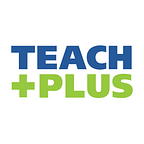For Kindergartens, School During COVID Is Simply School
By Marsia Ronyak
I’ve just started my 28th year of teaching in an early childhood classroom. I teach in person, five days a week (in my district, grades K-5 are currently in person), so I see my students every day from 8 a.m. to 2:45 p.m. My district purchased a variety of PPE that includes hand sanitizer, disinfectant, and plastic shields. Mask-wearing for all staff and students was not negotiable and each classroom was provided with a box for adults and children. My colleagues and I spent a great deal of time before school started analyzing our daily schedule to accommodate for increased cleaning between lessons, time for handwashing, and time to teach rules around social distancing. Surprisingly, despite all these new procedures, the daily routine in my classroom has been very similar to my schedule last year.
Kindergarten teachers prepare for the great unknown with our students; we always have. We typically have students enter with a wide range of ages and experiences; some have no prior schooling and students as young as 4 years old can start before October 1. Many of us who teach kindergarten were prepared for the unpredictable start to this COVID teaching because we are used to the unpredictable start of kindergarten teaching. We teach children how to “do” school. This year has been no exception because kindergartners will do what they always do: come ready to learn and play and make friends. They don’t know what brick-and-mortar school is like because they weren’t in the building four months ago. They have no idea what a “cohort” is because they just see themselves as part of our classroom. They assume the classroom is set up with spots on the floor because it is, not because their teacher has to put three feet in between them. They watch me disinfect and help me clean tables because that’s how we keep everyone safe and from getting sick. That’s how school is. We wash our hands a lot and use hand sanitizer all day long because it keeps COVID away. And so, here we are, with energetic 4-, 5-, and 6-year-olds who wear masks and try to walk an arm’s length apart, and can’t sit near each other on our rug, and can’t share with each other because of COVID because this is how you “do” school.
The cleaning, spacing, and disinfecting are nothing compared to the way the masks have become ubiquitous in our daily routine. Teaching phonics and phonemic awareness becomes even more challenging when you can’t model the appropriate way to make a sound because they can’t see your mouth and you can’t see theirs. Social-emotional learning (SEL) lessons that teach reading facial cues become another challenge when half of our faces are covered by a mask. Is that happiness, excitement, or anger you are showing with your eyes? Wiggly teeth are a big deal in kindergarten and I now don’t know if someone is about to lose a tooth unless they tell me. (Thankfully, runny noses are covered by masks). My colleagues and I were skeptical of the lanyards our district provided to clip to the masks to prevent the children from losing them during lunch or time outside. And, true to form, the kids with a lanyard turned them into leashes for their “pet mask,” which were then walked across the playground and run through the grass. It is not much of a mental leap to imagine what happened when one of the boys took his lanyard and mask into the restroom and returned with a wet mask (which promptly went into a zip-top bag to be washed at home). To his credit, he did say he washed his hands.
I add these procedures and measures to my routine because I know this school is what young children need. They need to be with their teacher, watching, learning, and getting immediate feedback at their attempts at writing, reading, and thinking. They need to interact with their new friends in real time, in 3D, not on a 2D screen (2D and 3D shapes are now part of our curriculum). Do the children need reminders to put the mask over their noses? Of course. Do they argue about it? No. Because that’s how school is.
Before classes began, I thought about how much of our day would become unpredictable and how things would look differently with all of the protective measures that we would need to do. If we take away all of the things that make school school (interacting with friends, playing with and sharing toys, singing songs) is it worth going to school at all? What I found as we worked through those first few weeks and months together is that kindergarteners will do what kindergarteners do: They will play and laugh and work hard; they will listen and work to keep themselves and each other safe because that’s how school is. They will approach school as a place that welcomes them and celebrates their joy of learning and wanting to be together because my principal and staff have worked to create that for all of our students. They will do the school we create for them and they will do it while washing hands, cleaning tables, and, yes, even while wearing a mask.
Marsia Ronyak teaches kindergarten at Sagebrush Elementary in Aurora, Colorado. She is a Teach Plus Colorado Policy Fellowship alumna and a National Board Certified Teacher.
